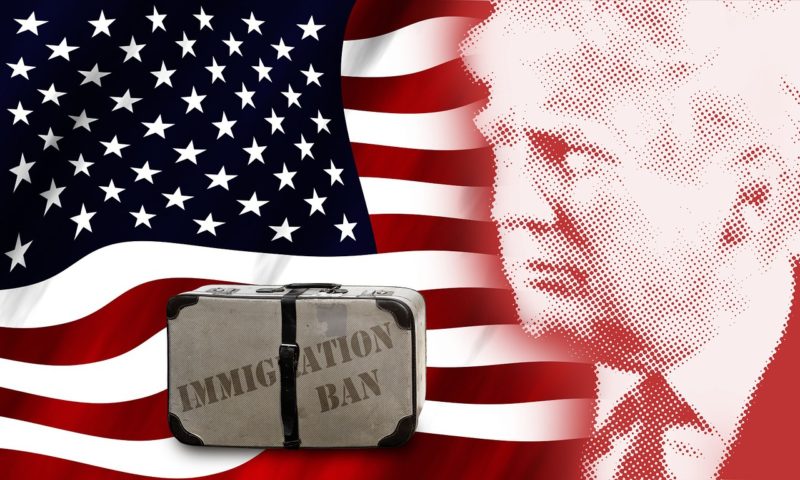We have had an illegal immigration problem for more than 50 years, but the government has done little or nothing to really stop it. Businesses and Republicans like the cheap labor, and Democrats like the cheap votes.
In 1986, Ronald Reagan signed the Immigration Reform and Control Act (IRCA), granting lawful permanent residence to 2.7 million people. The Act also placed penalties on employers who hired illegal immigrants. Within a decade, there were more than 5 million illegal immigrants in the United States. Today, it is in excess of 11 or 12 million people here illegally, many from over staying their work or education visas, but most from sneaking across the border with Mexico (although not all are from Mexico).
Over the years there have been fences built in some sections of the US-Mexico border, but they have done little to stem the flow of illegal immigrants into the country. It is estimated that 30-40% of illegal immigrants are people who over stay their visas. The main reason that we have this problem is that the Federal government does not enforce the laws, it punishes states who attempt to enforce the laws at the state level, and turns its head from the sanctuary cities that ignore the laws regarding the harboring of illegal aliens.
Donald Trump says that he wants to deport all illegal residents, build a wall along the entire US – Mexico border, and that Mexico will pay for it. Can it be done? I think it can, in steps, with a minimum of judicial oversight required.
Step One – The immigration service will prepare a “Residency Application”. They will be available at all post offices throughout the country, and possibly at other locations. There was a time that immigrants were required to register at the post office every year. Anyone in the country illegally must obtain the applications for themselves and all minor children for whom they maintain custody. The questions will include such things as the approximate date that they entered the country, their address, their current employment status and previous employers, and assurances that they will not become a drain of American taxpayers.
Step Two – Those questionnaires must be completed and returned to INS for processing and background checks. There will be a six month window for these forms to be returned from the date that they are made available. One must be completed for each person, adult or child, and include a small processing fee, perhaps $20 per application.
Step Three – The FBI and the local police will conduct background checks and search for any arrest records. The United States processed 8 million background checks in one month for gun purchases, so it should be possible that these background checks should be completed within 6 months of receipt.
Step Four – Now comes the “deportation.” Upon completion of the background check, the INS will forward documents to the illegal residents stating that they have been approved for further processing. They must now physically take those documents to the nearest embassy of the country from which they came, which we would classify as a “voluntary deportation.” For example, there are 44 Mexican embassy locations in the United States. The purpose of this exercise is to insure that the individuals are not wanted in their home country for crimes.
Step Five – When cleared by the governments from which they originated, they will take those documents to the local INS office. There, they will be photographed, pay a fine for illegally entering the country (perhaps $1,000 per person), and receive a residency permit that will allow them to remain and work.
Those who fail to register and go through the process will be subject to a “fast track” deportation system.
Regarding the building of a wall along the southern border with Mexico, many have compared such a wall to the Berlin Wall in Germany. That is like comparing apples to oranges. The Berlin wall was built to keep East Berliners from leaving and fleeing into the Western sectors. The wall being discussed along the Mexico border is intended to help maintain the laws against illegal immigration.
If 7 million of the people here illegally comply and pay the fine, the government will have $7 billion with which to build a wall on the Mexican border. This will became a huge deterrent to drug smuggling, which costs the United States $36 billion to combat, new unlawful migrations and keeping people who have been deported, especially those with felony records, from returning to this country.
Finally, we need to enforce the laws regarding the hiring and support of illegal residents. Whether or not to enforce our laws cannot be left to the whim of an executive branch that decides which laws to enforce and which to ignore. We also need to establish “guest worker” programs to take care of the work that many Americans refuse to do. If there is not a financial reason for people to enter illegally, most will not.
If we do not do these things, the country will be debating illegal immigration again in 2037.
